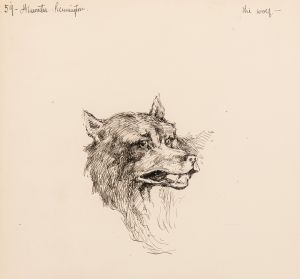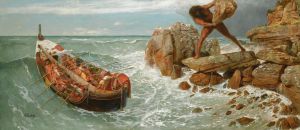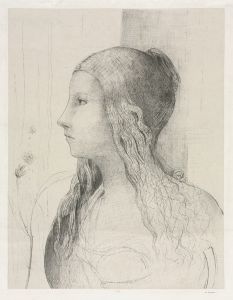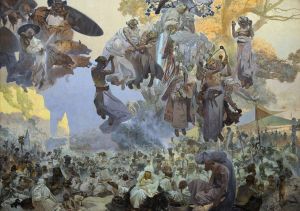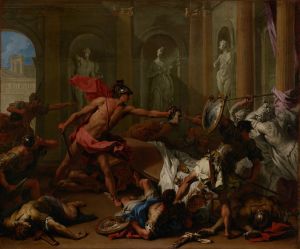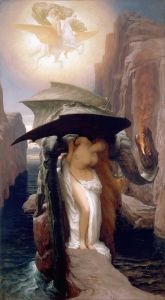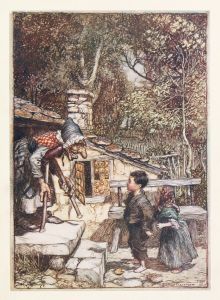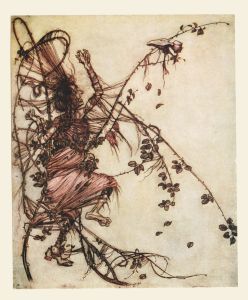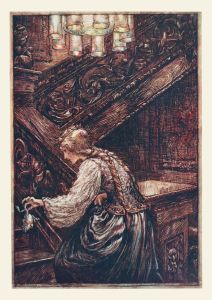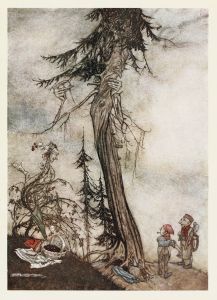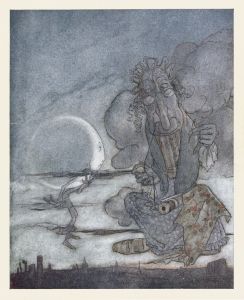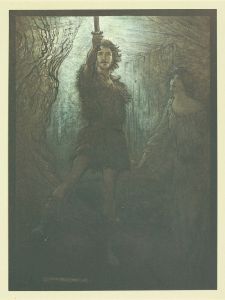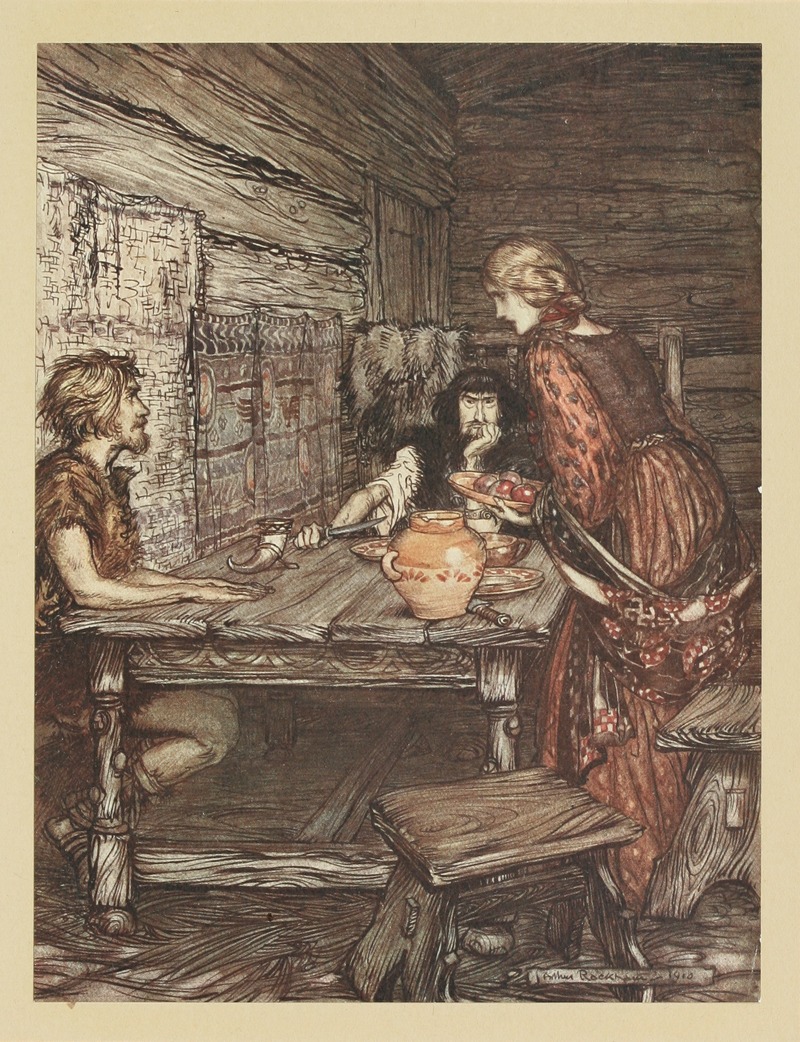
Hunding discovers the likeness between Siegmund and Sieglinde
A hand-painted replica of Arthur Rackham’s masterpiece Hunding discovers the likeness between Siegmund and Sieglinde, meticulously crafted by professional artists to capture the true essence of the original. Each piece is created with museum-quality canvas and rare mineral pigments, carefully painted by experienced artists with delicate brushstrokes and rich, layered colors to perfectly recreate the texture of the original artwork. Unlike machine-printed reproductions, this hand-painted version brings the painting to life, infused with the artist’s emotions and skill in every stroke. Whether for personal collection or home decoration, it instantly elevates the artistic atmosphere of any space.
Arthur Rackham was a prominent British illustrator known for his distinctive style, which combined haunting, dreamlike qualities with precise detail. His work gained significant popularity in the early 20th century, particularly for his illustrations of fairy tales, myths, and classic literature. One of his notable contributions was to Richard Wagner's "Der Ring des Nibelungen," a series of four epic music dramas. Rackham's illustrations for these operas are celebrated for their ability to capture the essence of Wagner's complex characters and themes.
"Hunding discovers the likeness between Siegmund and Sieglinde" is one of Rackham's illustrations for Wagner's opera "Die Walküre," the second opera in the "Ring" cycle. This particular scene is pivotal in the narrative and occurs in the first act of "Die Walküre." The opera, which premiered in 1870, is part of Wagner's larger exploration of mythological themes, drawing heavily from Norse mythology and the medieval German epic, the Nibelungenlied.
In the story, Siegmund and Sieglinde are twin siblings separated at birth. They meet again as adults, unaware of their true relationship. Sieglinde is trapped in an unhappy marriage with Hunding, a warrior. Siegmund, fleeing from enemies, finds refuge in Hunding's home. During his stay, Siegmund and Sieglinde discover their kinship and fall in love, setting off a chain of events that drive the opera's dramatic narrative.
Rackham's illustration captures the moment when Hunding, Sieglinde's husband, begins to notice the striking resemblance between Siegmund and Sieglinde, hinting at their shared lineage. Rackham's ability to convey emotion and tension through his art is evident in this piece. His use of line and color creates a sense of foreboding and drama, reflecting the opera's themes of fate and forbidden love.
Rackham's illustrations for "Die Walküre" were part of a larger project to illustrate Wagner's "Ring" cycle, which was published in 1910. These illustrations were highly acclaimed and contributed to Rackham's reputation as one of the leading illustrators of his time. His work on Wagner's operas is noted for its ability to translate complex musical and narrative elements into visual form, making the stories accessible to a broader audience.
Arthur Rackham's influence extends beyond his illustrations for Wagner. His work has had a lasting impact on the field of illustration, inspiring generations of artists with his unique blend of fantasy and realism. His illustrations continue to be celebrated for their technical skill and imaginative power, securing his place as a key figure in the history of art and illustration.
In summary, "Hunding discovers the likeness between Siegmund and Sieglinde" by Arthur Rackham is a significant illustration that captures a crucial moment in Wagner's "Die Walküre." Rackham's work on the "Ring" cycle remains an important contribution to the visual interpretation of Wagner's operas, showcasing his ability to blend narrative depth with artistic beauty.





